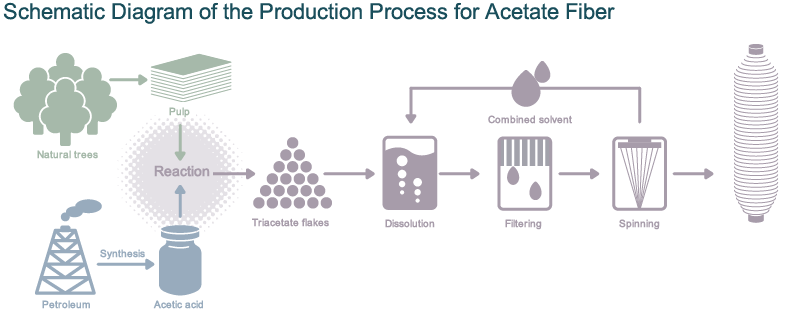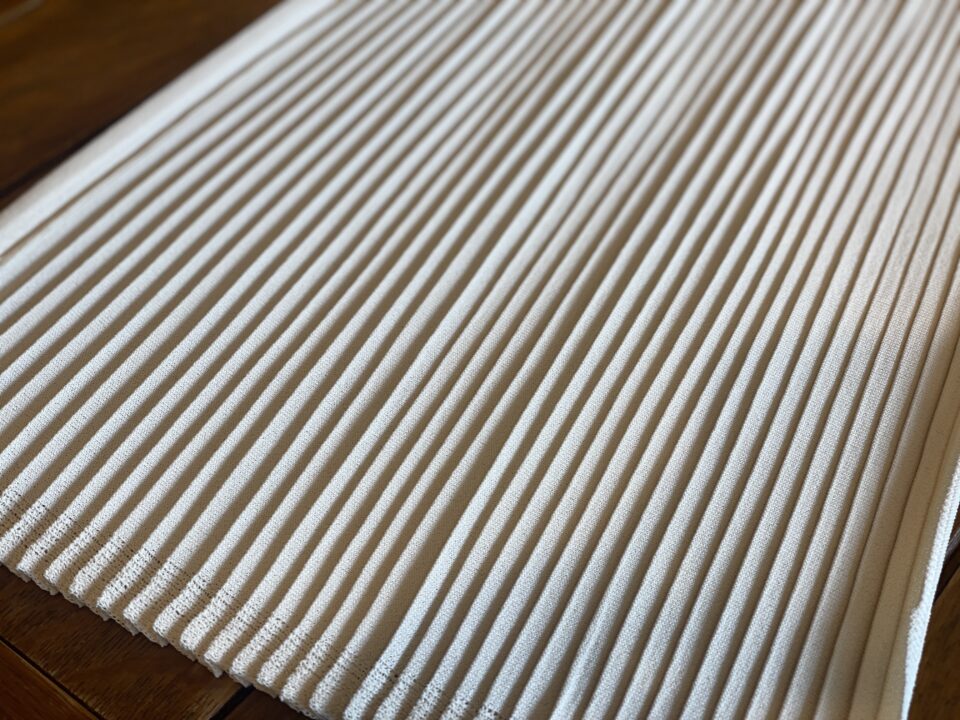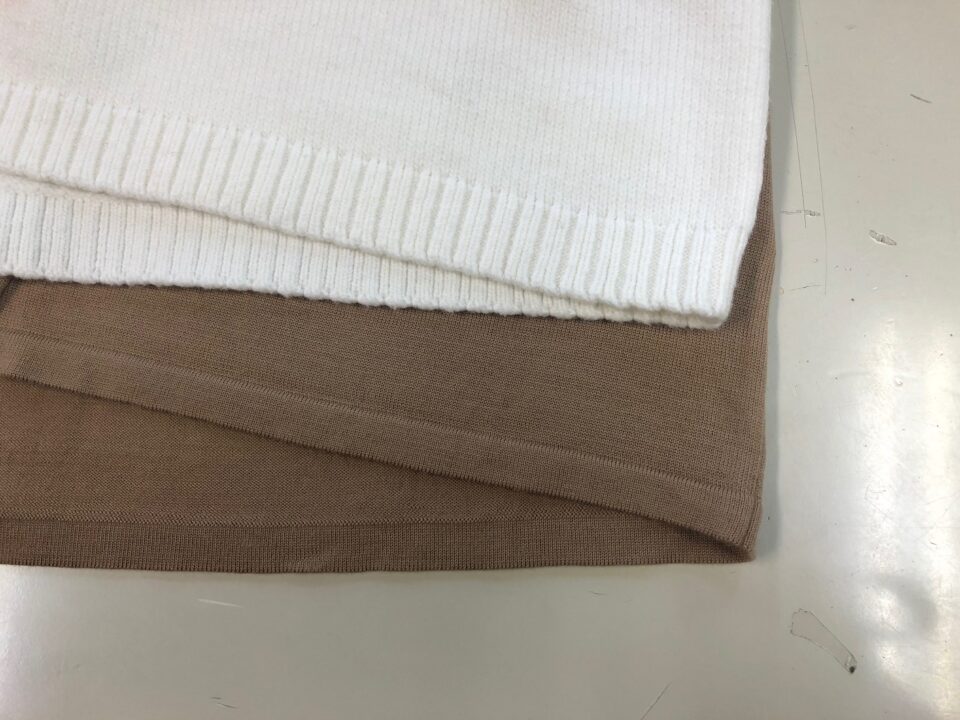
前一篇文章
What will consumers want in 2023?
2021年6月7日
KNIT MAGAZINE


Acetate is a human-made, semi-synthetic material derived from cellulose. It is created by combining wood pulp with chemicals like acetic acid (vinegar), acetic anhydride, and sulfuric acid. This mixture is then transformed into fibers, which can be blended with other materials, formed into sheets, or molded into various shapes.

image by here
The production of acetate fibers involves chemically reacting high-purity wood pulp with acetic anhydride using a sulfuric acid catalyst to produce acetate flakes. These flakes are then dissolved in solvents, filtered to remove insoluble solids and gel, and transformed into a spinning solution. The undiluted spinning solution is heated and discharged into a spinning cylinder, where it forms fibers through evaporation of the solvent. This method is known as dry spinning.

Acetate possesses several advantages, including a natural feel and gentle touch on the skin, an elegant gloss and vibrant colors, lightweight and flexible draping, excellent water absorption and quick drying properties, dimensional stability, strong pleating durability (in the case of triacetate), resistance to pilling, a relatively high temperature range for safe ironing, and easy stain removal.
However, there are also some disadvantages associated with acetate. It dissolves when exposed to nail polish remover or certain solvents, colored items may experience discoloration due to exhaust gas, the gloss diminishes when alkaline detergents are used, and it has lower strength compared to some other materials.
Acetate fibers are commonly used in the production of textiles due to their silk-like texture, moderate moisture absorption, and beautiful luster. It is utilized in high-end fashion for its soft texture, but its durability against stretching and friction is relatively low. Acetate is also employed as a material for cigarette filters because it can be easily produced and does not alter the taste of cigarettes. Additionally, its flame retardancy makes it suitable for fireproof curtains when combined with other materials. Acetate’s high transparency allows for vibrant coloration, distinguishing it from petroleum-based resins, nylon, polyester, and PET bottle materials, which often result in turbidity. Furthermore, acetate’s surface is easily polished, giving it a unique wet-like luster. This material finds applications in eyeglass frames and shoehorn curves, despite being susceptible to heat-induced deformation.

In terms of the pleating process, acetate exhibits different characteristics compared to polyester. Acetate can accentuate drape and luster, making it well-suited for elegant styles. Its crystal pleats are particularly noteworthy.
To summarize, acetate is a versatile material valued for its softness, beautiful luster, and ability to create an elegant atmosphere in a range of fashion items.


2023年11月29日

2023年11月9日

2023年11月7日

2023年11月1日

2023年10月26日

2023年10月24日